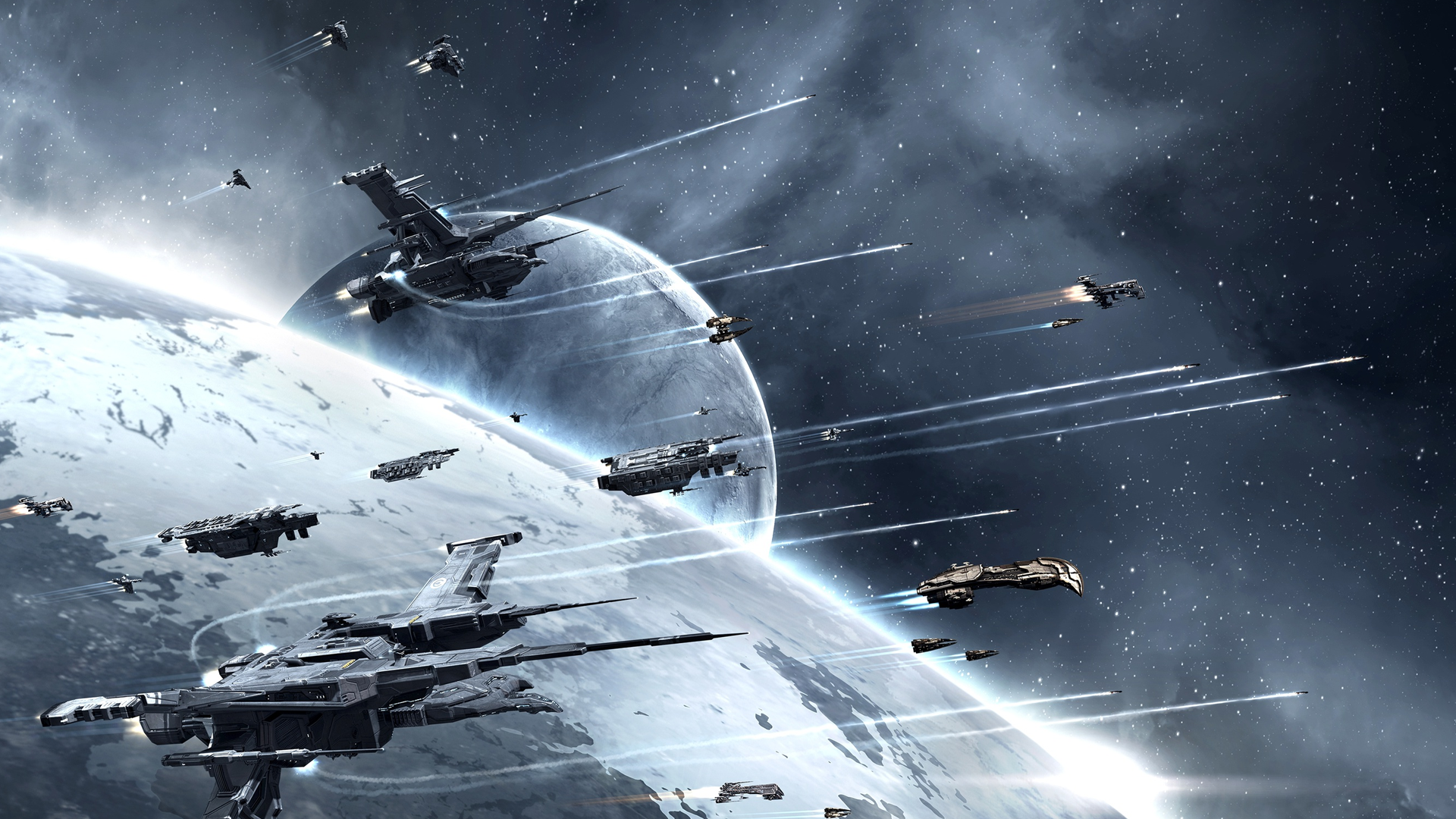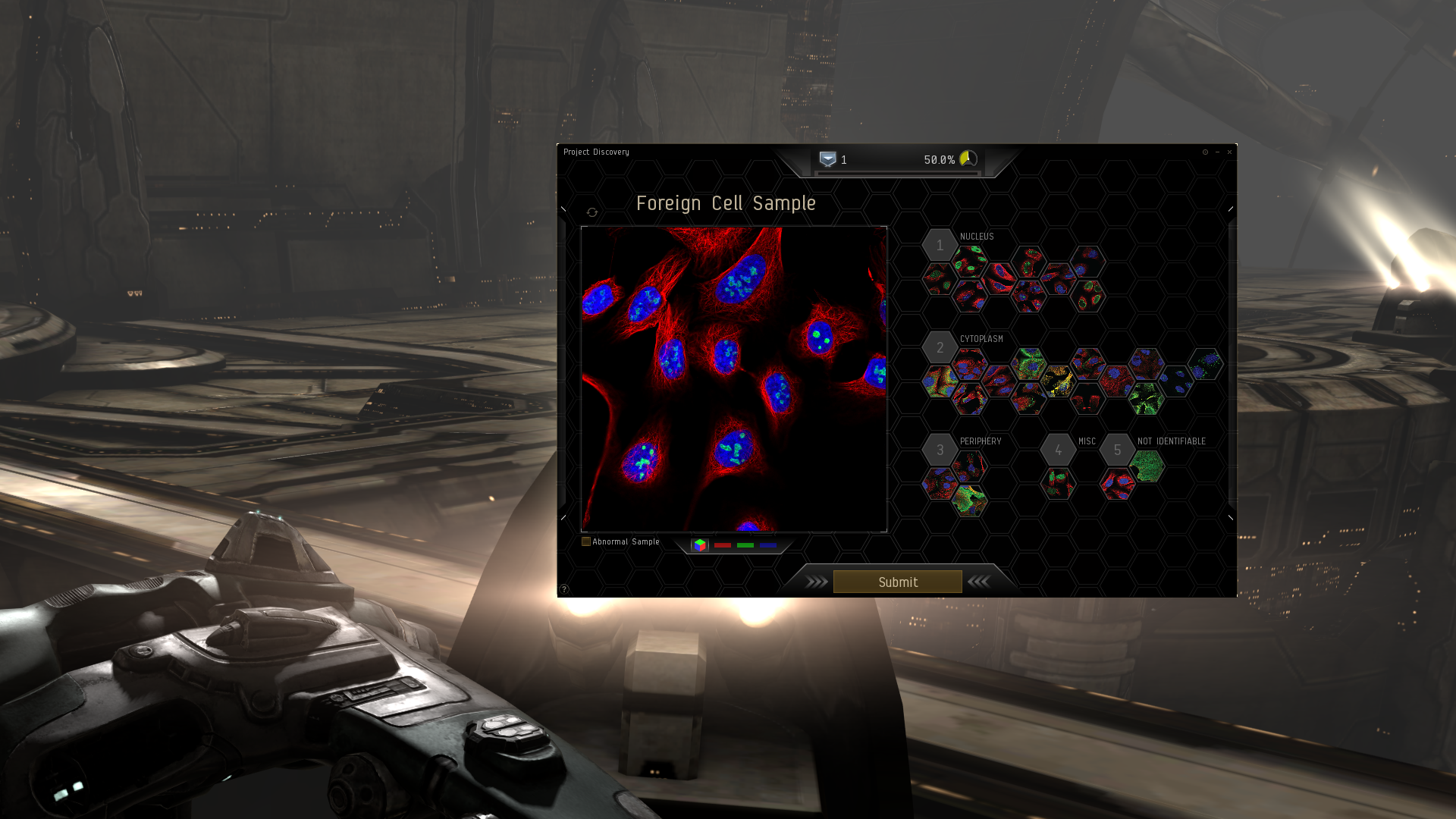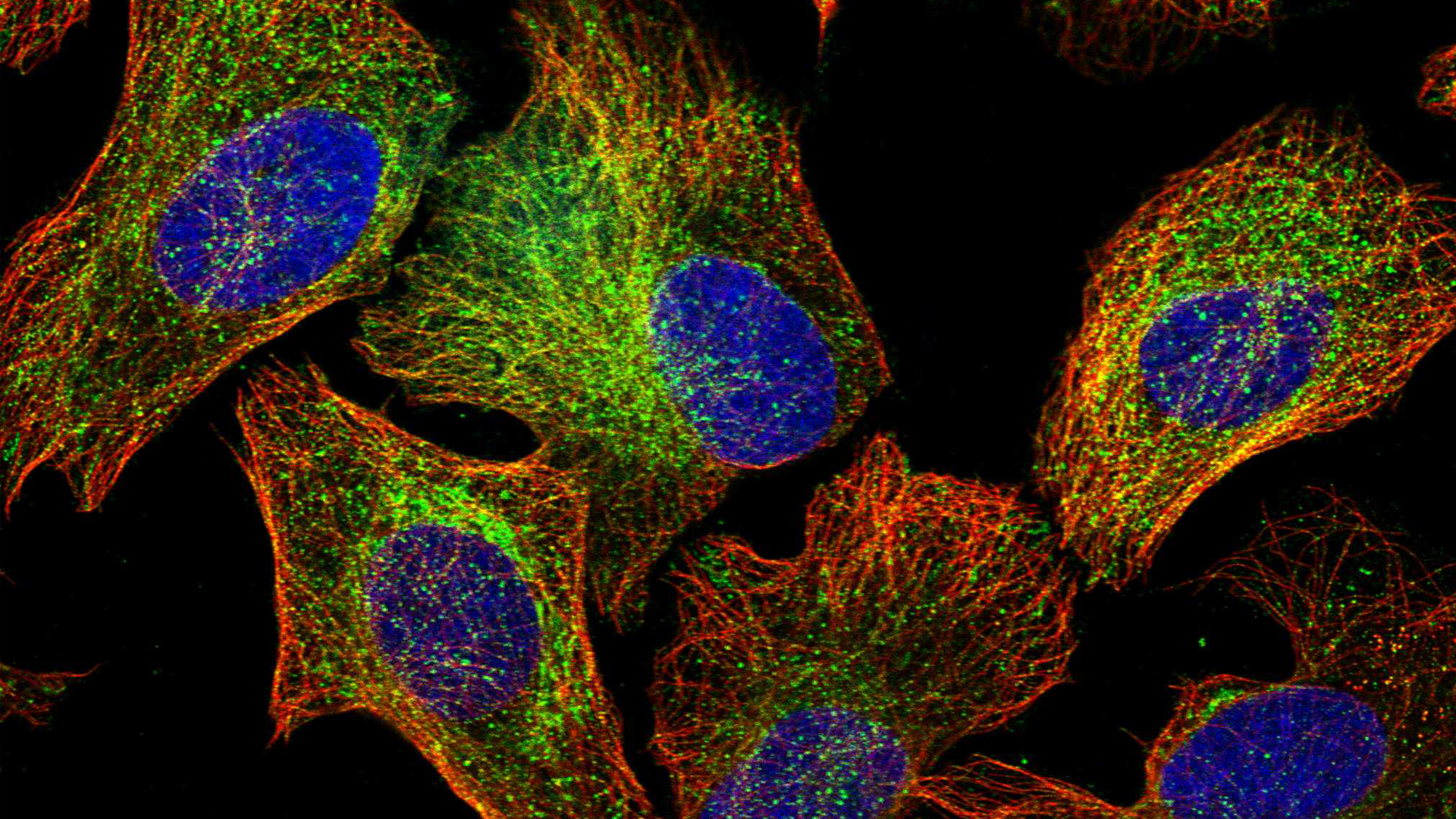How Eve Online players are helping medical science

The Human Protein Atlas is a scientific research program whose goal is to map the human proteome. With this information medical science can better explain the biological and molecular function of the body, improving the diagnosis and treatment of diseases as a result. It’s an important venture, but there’s just one problem: computers are terrible at identifying proteins.
There are over 20,000 protein-coding genes in the human genome, which means a lot of proteins need to be mapped and categorised. But without computers to rely on, scientists need find other ways to chart them. This is where citizen science comes in, a type of crowd-sourced research conducted by large groups of people. And where do large groups of people with computers frequently congregate? Online games.
Massively Multiplayer Online Science is a new citizen science platform whose mission is to connect scientific research and videogames. “Research tasks completely integrated with game mechanics, narrative, and visuals can open up a new channel between the gamer and scientific community,” they say. “Converting a small fraction of the billions of hours spent playing games will bring an enormous contribution to scientific research.”
EVE Online, CCP’s space MMO, is the first game to team up with Massively Multiplayer Online Science. Project Discovery is a game within a game, and sees EVE players collaborating to help chart the human proteome. You do so by studying images from the Human Protein Atlas and categorising them based on a set of examples. If enough players come to the same conclusion, the identified protein is then sent back to the HPA.

I was in Reykjavik last week for EVE Fanfest, CCP’s annual fan convention, and got the chance to speak with Linzi Campbell, also known as CCP Affinity, about her work on the project. “Massively Multiplayer Online Science approached CCP and wanted to know if we were interested in collaborating on a citizen science project,” she says. “We thought it sounded like something our players would love, and we were super excited about it.”
CCP looked at several projects and chose the HPA. “They have a database of hundreds of thousands of images,” says Campbell. “And we needed that, because our players quickly go through things. In fact, the HPA has since told us that EVE players have been through their entire image database once already. I was stunned by the level of participation.”
Project Discovery was talked about at the EVE Fanfest keynote, which was also being streamed live on Twitch. I had Twitch chat running on my laptop as I watched the talk, just to see what people thought of each segment, and when Discovery was mentioned the chat was flooded with people shouting ‘CYTOPLASM!’ Confused, I ask Campbell about this.
The biggest gaming news, reviews and hardware deals
Keep up to date with the most important stories and the best deals, as picked by the PC Gamer team.
“Citizen science works by player consensus,” she says. “And cytoplasm was the most popular, because that was what they were most easily able to recognise.” In response they changed the way points were awarded, implementing a grading system. “Every ten or fifteen samples you get a training one, and depending on how you do, your level going forward is determined.”
As well as the noble pursuit of helping science, there’s also an in-game reward for taking part in Project Discovery. Every player has an accuracy rating, which dictates the rewards they get. And if your rating gets too low, you won’t receive anything. This is a way of encouraging people to take their time and submit accurate data. “EVE players are helping science,” says Campbell. “But they also earn Analysis Credits. This is a new currency we’ve introduced, and players can use them in the Sisters of Eve loyalty points store.”

When Campbell was determining the Analysis Credits required to buy some of the more exotic items in the LP store, including armour sets, she thought it would take weeks. “We released at about midday, and by 2am someone who had been playing solidly had unlocked everything, which is amazing.” But whether you’re someone as dedicated as this, or only play Project Discovery for a few minutes, every contribution helps.
“This is the only example of a player base this size being used for a citizen science project,” says Campbell. “Massively Multiplayer Online Science is definitely onto something unique here. If every gamer devotes just a few minutes of their time, that’s a huge help to science.” But, cleverly, Project Discovery’s inclusion in EVE isn’t completely arbitrary. There’s an in-universe reason for the work being done, and people in New Eden are collaborating to help both a real-world and a fictional cause.
A major event in the game’s fiction last year was the murder of Amarr Empress Jamyl Sarum. She was killed by a powerful new NPC force called the Drifters, whose origins and motives are shrouded in mystery. “The Sisters of Eve are researching Drifter DNA,” says Campbell. “Through Project Discovery our players are, as well as helping science, helping discover the mystery of who the Drifters are, why they’re so powerful, and where their technology comes from. Players may even be able to use Drifter tech themselves.”
EVE Online players have a certain reputation, largely based on the stories of piracy and espionage that make the headlines. But Project Discovery is an example of capsuleers working together for a worthy cause. Even if they’re only doing it for the rewards, they’re still helping further our knowledge of the human body. It’s amazing, really, that internet spaceships and medical science share a connection like this. But what’s next for the project? “Proteins won’t last forever,” says Campbell. “So we have to think about other ways to help science. There are so many exciting opportunities out there.”
If it’s set in space, Andy will probably write about it. He loves sci-fi, adventure games, taking screenshots, Twin Peaks, weird sims, Alien: Isolation, and anything with a good story.


